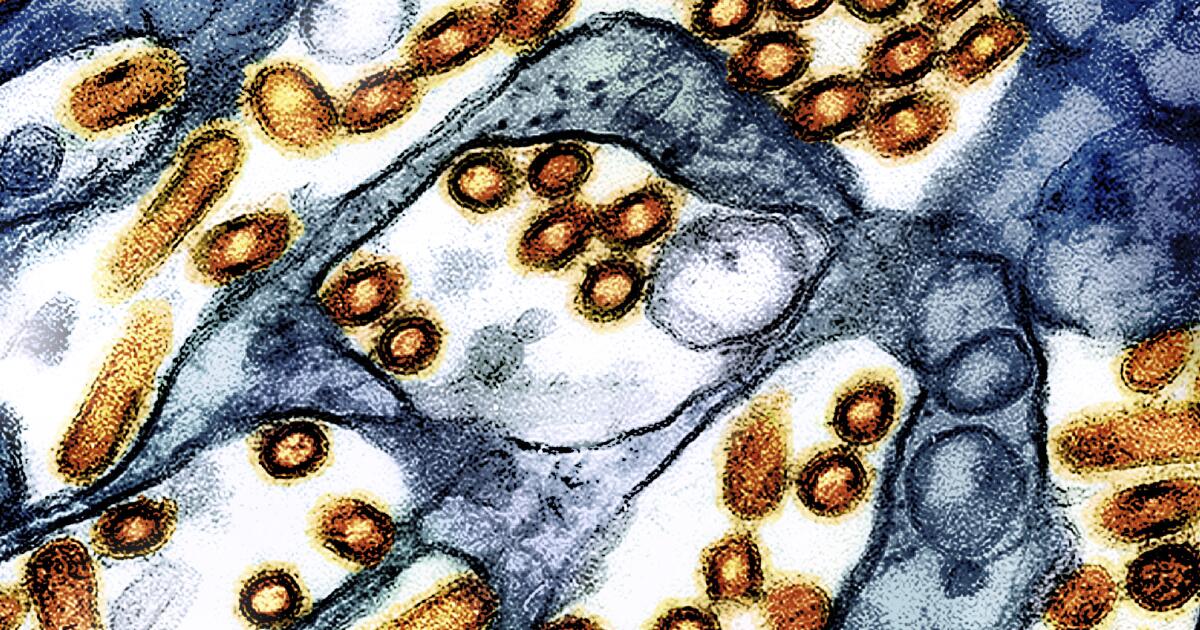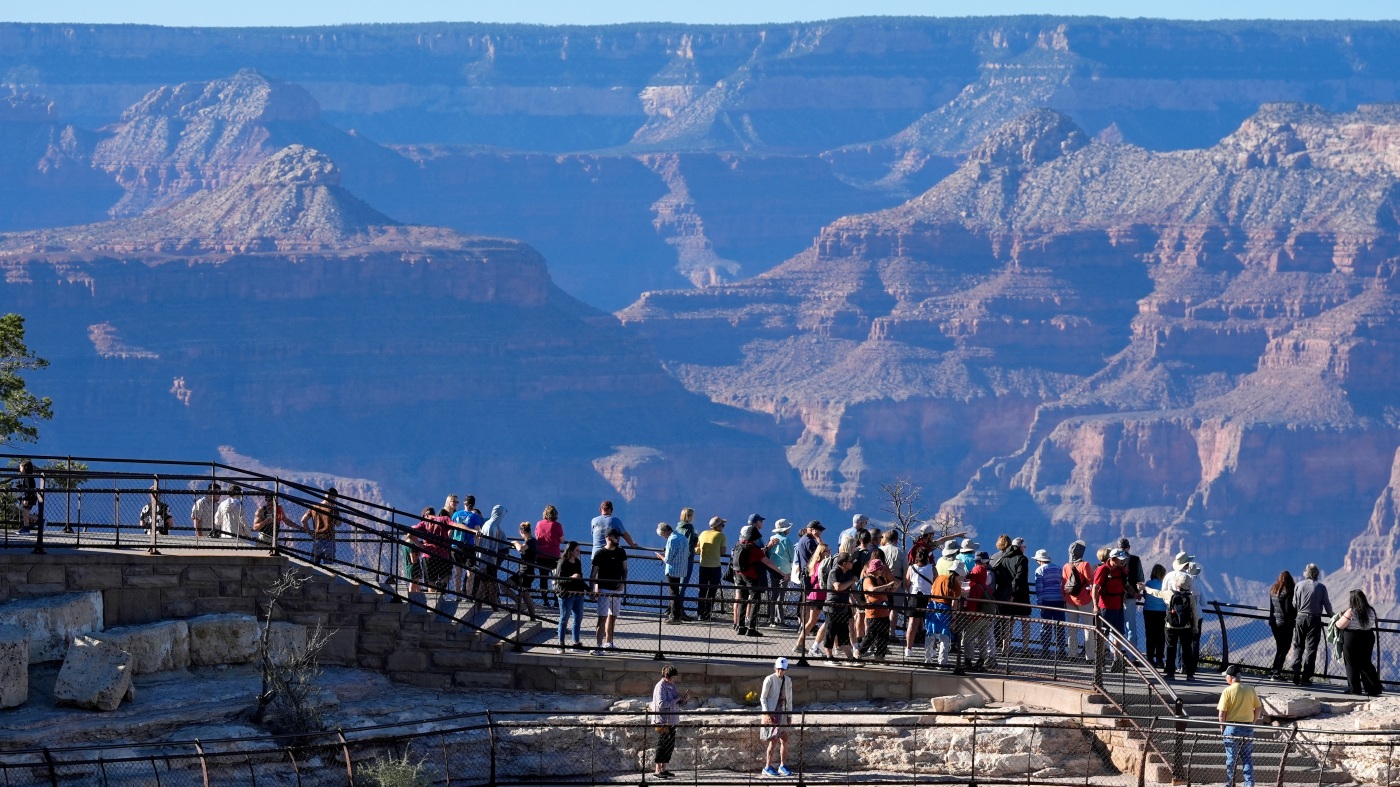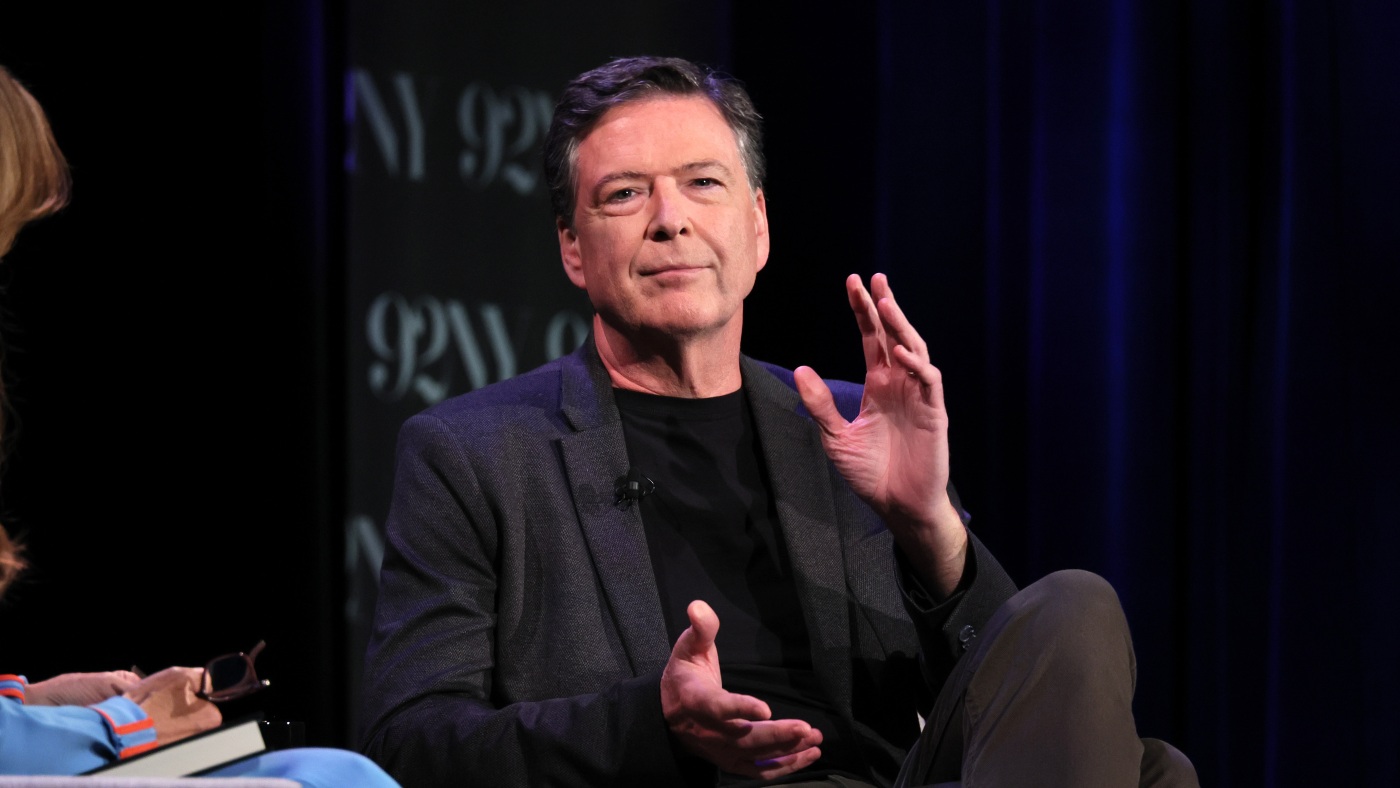Hawaii
Senior housing project on Maui breaks ground after delays | Honolulu Star-Advertiser

Hawaii
Navy sailor dies after attempting to rescue children at Hawaii beach

A U.S. Navy sailor assigned to the Pacific Missile Range Facility at Barking Sands died Saturday after attempting to rescue children from high surf at a Kauai beach, authorities said.
Master-at-Arms 1st Class Jeffrey Diaz died after first responders pulled him from waters off the military installation along the Hawaiian island’s western shore, the Kauai Police Department said in a release Monday.
On Saturday afternoon, emergency personnel were dispatched to Waiapua‘a Bay near Shenanigans, a restaurant located along the beach at PMRF, after reports of a swimmer in distress, according to the release.
Authorities said Diaz had entered the water to rescue two children who were “struggling in high surf.”
“While the children made it back to shore safely, he encountered trouble in the water,” the Kauai Police Department said.
Ocean Safety Bureau and Barking Sands Fire and Emergency Services Department personnel rescued the 47-year-old from the water and undertook lifesaving efforts, authorities said. He was transported to Kauai Veterans Memorial Hospital in Waimea, where he was later pronounced dead.
Diaz reported to PMRF in October, according to the Navy. He previously served on the guided-missile destroyer USS Ross and at Navy Support Facility Diego Garcia, among other duty stations.
His awards and decorations include the Navy and Marine Corps Commendation Medal, Navy and Marine Corps Achievement Medal, Navy Unit Commendation and Kosovo Campaign Medal, among others.
Diaz enlisted in the Navy in 1997, according to service records. He promoted to master-at-arms 1st class in 2022.
Beth Sullivan is an editor for Military Times. Previously, she worked as a staff reporter for The Daily Memphian and as an assistant editor at The Austin Chronicle.
Hawaii
LIST: Here’s the holiday hours of malls on each island

HONOLULU (KHON2) — Not sure when the mall closest to you is open? This is your island-by-island mall guide to shopping during the holiday season of chaos and cheer!
Oʻahu
The busiest malls on Oʻahu include: Ala Moana Center, International Market Place, Kahala Mall, Ka Makana Aliʻi, Pearlridge Center, Royal Hawaiian Center, Waikele Premium Outlets and Windward Mall.
Ala Moana
Normally open daily from 10 a.m. to 8 p.m., the mall will extend their hours starting Dec. 5–although individual store and restaurant hours may be different.
The following hours are the holiday schedule:
- Nov. 27 (Thanksgiving Day) – Closed
- Nov. 28 (Black Friday) – 8 a.m. to 9 p.m.
- Nov. 29 to Dec. 4 (Normal hours) – 10 a.m. to 8 p.m.
- Dec. 5 to 23 (Extended hours) – 10 a.m. to 9 p.m.
- Dec. 24 (Christmas Eve) – 10 a.m. to 6 p.m.
- Dec. 25 (Christmas Day) – Closed
- Dec. 26-30 (Extended Hours) – 10 a.m. to 9 p.m.
- Dec. 31 (New Year’s Eve) – 10 a.m. to 6 p.m.
- Jan. 1 (Fukubukuro) – 10 a.m. to 9 p.m.
During their extended hours, the mall will close at 8 p.m. on Sundays.
International Market Place
The International Market Place’s hours will not change for the holidays, according to their website.
Monday through Sunday the mall will remain open from 10 a.m. to 9 p.m., with varying hours for certain stores and restaurants.
Kahala Mall
Regular mall hours for Kahala are 10 a.m. to 9 p.m. from Monday to Saturday and 10 a.m. to 6 p.m. on Sunday.
The following hours are the holiday schedule:
- Nov. 27 (Thanksgiving Day) – Closed
- Nov. 28 (Black Friday) – 8 a.m. to 9 p.m.
- Nov. 29 to Dec. 22 (Regular hours) – 10 a.m. to 9 p.m.
- Dec. 23 – 10 a.m. to 6 p.m.
- Dec. 24 (Christmas Eve) – 9 a.m. to 6 p.m.
- Dec. 25 (Christmas Day) – Closed
- Dec. 26 to 29 (Regular hours) – 10 a.m. to 9 p.m.
- Dec. 30 – 10 a.m. to 6 p.m.
- Dec. 31 (New Year’s Eve) – 10 a.m. to 6 p.m.
- Jan. 1 (New Year’s Day) – 10 a.m. to 6 p.m.
On Jan. 2, 2026, the regular mall hours will begin again for the new year.
Ka Makana Aliʻi
Ka Makana Aliʻi’s hours will not change for the holidays, according to their website.
Monday through Saturday the mall will remain open from 10 a.m. to 9 p.m. and 10 a.m. to 6 p.m. on Sunday, with varying hours for certain stores and restaurants.
Pearlridge Center
The mall’s regular hours are from 10 a.m. to 8 p.m. on Monday through Saturday and 10 a.m. to 6 p.m. on Sunday.
The following is their extended holiday hours:
- Nov. 27 (Thanksgiving Day) – Closed
- Nov. 28 (Black Friday) – 8 a.m. to 9 p.m.
- Nov. 29 – 9 a.m. to 9 p.m.
- Nov. 30 to Dec. 7 (Regular hours):
- Mondays through Saturdays – 10 a.m. to 8 p.m.
- Sundays – 10 a.m. to 6 p.m.
- Dec. 8 to Dec. 14 – 10 a.m. to 9 p.m.
- Dec. 15 to Dec. 19 – 10 a.m. to 10 p.m.
- Dec. 20 to Dec. 23 – 9 a.m. to 10 p.m.
- Dec. 24 (Christmas Eve) – 9 a.m. to 6 p.m.
- Dec. 25 (Christmas Day) – Closed
- Dec. 31 (New Year’s Eve) – 10 a.m. to 6 p.m.
- Jan. 1 (New Year’s Day) – 10 a.m. to 6 p.m.
Some stores and restaurants may operate with varying hours.
The mall will return to its regular hours starting Dec. 26.
Royal Hawaiian Center
According to their website, Royal Hawaiian Center’s hours will not change for the holidays.
Monday through Sunday the mall will remain open from 10 a.m. to 9 p.m., with varying hours for certain restaurants.
Waikele Premium Outlets
Starting on Dec. 1, the following are the extended hours for the center:
- Nov. 27 (Thanksgiving Day) – CLOSED
- Nov. 28 (Black Friday) – 5 a.m. to 11 p.m.
- Nov. 29 – 8 a.m. to 10 p.m.
- Nov. 30 – 10 a.m. to 7 p.m.
- Dec. 1 to Dec. 6 – 10 a.m. to 8 p.m.
- Dec. 7 – 10 a.m. to 7 p.m.
- Dec. 8 to Dec. 12 – 10 a.m. to 8 p.m.
- Dec. 13 – 10 a.m. to 9 p.m.
- Dec. 14 – 10 a.m. to 7 p.m.
- Dec. 15 to Dec. 20 – 10 a.m. to 9 p.m.
- Dec. 21 – 10 a.m. to 7 p.m.
- Dec. 22 to 23 – 10 a.m. to 9 p.m.
- Dec. 24 (Christmas Eve) – 10 a.m. to 6 p.m.
- Dec. 25 (Christmas Day) – Closed
- Dec. 26 – 10 a.m. to 9 p.m.
- Dec. 27 – 10 a.m. to 8 p.m.
- Dec. 28 – 11 a.m. to 6 p.m.
- Dec. 29 to 30 – 10 a.m. to 7 p.m.
- Dec. 31 (New Year’s Eve) to Jan. 1 (New Year’s Day) – 10 a.m. to 7 p.m.
Windward Mall
The mall’s regular hours are from 10 a.m. to 9 p.m. on Monday through Saturday and 10 a.m. to 6 p.m. on Sunday.
Extended holiday hours are listed below:
- Nov. 27 (Thanksgiving) – Closed
- Nov. 28 (Black Friday) – 9 a.m. to 9 p.m.
- Dec. 24 (Christmas Eve) – 8 a.m. to 6 p.m.
- Dec. 25 (Christmas Day) – Closed
Kauai
The busiest shopping areas on Kauai include: Kukui Grove Center, Poipu Shopping Village, Princeville Center and The Shops at Kukuiʻula.
Kukui Grove Center
The center’s regular hours are 9:30 a.m. to 7 p.m. on Monday to Thursday, 9:30 a.m. to 9 p.m. on Friday, 9:30 a.m. to 7 p.m. on Saturday and 10 a.m. to 6 p.m. on Sunday.
Their website doesn’t display any extended holiday hours.
Poipu Shopping Village
The village is open 9:30 a.m. to 9 p.m. from Monday to Sunday, with individual store hours varying.
Extended holiday hours are not displayed on their website.
Princeville Center
The center’s regular hours are 9 a.m. to 9 p.m. from Monday to Sunday.
Their website doesn’t display any extended holiday hours.
The Shops at Kukuiʻula
Regular hours for the shops is 10 a.m. to 9 p.m. from Monday to Sunday, with individual store hours varying.
Shopping hours for Nov. 28 (Black Friday) are 8 a.m. to 1 p.m.
Maui
The busiest places to shop on Maui include: Maui Mall Village, Queen Kaʻahaumanu Center, The Shops at Wailea and Whalers Village.
Maui Mall Village
From Nov. 17 to 23, the village hours are 7 a.m. to 9 p.m.
Their website doesn’t display any extended holiday hours.
Queen Kaʻahaumanu Center
The center’s hours are 10 a.m. to 8 p.m. on Monday to Thursday, 10 a.m. to 9 p.m. on Friday to Saturday, and 10 a.m. to 5 p.m. on Sunday.
Extended holiday hours are not displayed on their website.
The Shops at Wailea
Regular hours at the shops are 10 a.m. to 9 p.m. from Monday to Sunday.
Their website doesn’t display any extended holiday hours or closures.
Whalers Village
The village hours are 9 a.m. to 9 p.m. from Monday to Sunday, with individual store and restaurant hours varying.
Extended holiday hours are not yet displayed on their website.
Hawaiʻi Island
The busiest shopping places on Hawaiʻi Island include: Prince Kuhio Plaza, Queens’ Marketplace, The Shops at Mauna Lani and Waimea Center.
Prince Kuhio Plaza
The plaza’s hours are 10 a.m. to 7 p.m. on Monday through Thursday, 10 a.m. to 8 p.m. on Friday to Saturday, and 10 a.m. to 6 p.m. on Sunday.
Extended holiday hours are not yet displayed on their website.
Queens’ Marketplace
The marketplace hours are 10 a.m. to 8 p.m. on Monday to Sunday.
Their website doesn’t display extended holiday hours.
The Shops at Mauna Lani
The shops are open on Monday to Sunday with varying hours for each store.
Their website doesn’t display extended holiday hours.
Waimea Center
The Waimea Center hours are 9 a.m. to 6 p.m. on Monday to Friday, 9 a.m. to 1:30 p.m. on Saturday, and closed on Sunday.
Hours vary for each store, but extended holiday hours are not displayed on their website.
Hawaii
How AI Is Helping Save Hawaii’s Vanishing Birds | CNN Business

Hawaii’s native birds are rapidly disappearing, largely due to avian malaria. Researchers at the University of Hawaii Hilo’s LOHE Bioacoustics Lab are using birdsong to monitor and map their decline. With help from Google DeepMind’s Perch AI model, they can now scan thousands of hours of forest audio in minutes, helping speed up conservation efforts before it’s too late.
-
Business1 week ago
Fire survivors can use this new portal to rebuild faster and save money
-

 World1 week ago
World1 week agoFrance and Germany support simplification push for digital rules
-

 News1 week ago
News1 week agoCourt documents shed light on Indiana shooting that sparked stand-your-ground debate
-

 Science4 days ago
Science4 days agoWashington state resident dies of new H5N5 form of bird flu
-

 World1 week ago
World1 week agoSinclair Snaps Up 8% Stake in Scripps in Advance of Potential Merger
-

 World1 week ago
World1 week agoCalls for answers grow over Canada’s interrogation of Israel critic
-

 Politics1 week ago
Politics1 week agoDuckworth fires staffer who claimed to be attorney for detained illegal immigrant with criminal history
-
Business1 week ago
Amazon’s Zoox offers free robotaxi rides in San Francisco

























